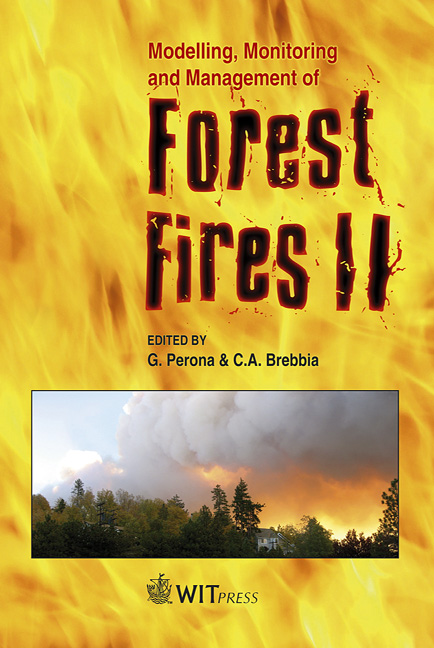Monitoring Fire-fighters’ Smoke Exposure And Related Health Effects During Gestosa Experimental Fires
Price
Free (open access)
Transaction
Volume
137
Pages
12
Page Range
83 - 94
Published
2010
Size
977 kb
Paper DOI
10.2495/FIVA100081
Copyright
WIT Press
Author(s)
A. I. Miranda, V. Martins, P. Cascão, J. H. Amorim, J. Valente, R. Tavares, O. Tchepel, C. Borrego, C. R. Cordeiro, A. J. Ferreira, D. X. Viegas, L. M. Ribeiro & L. P. Pita
Abstract
The main objective of this study is to contribute to the scientific knowledge regarding fire-fighters’ exposure to smoke and its related health effects. Forest fire experiments were developed with an extensive number of measurements of individual exposure to smoke pollutants and of medical parameters for a group of fire-fighters. For the smoke exposure monitoring, ten fire-fighters from four different fire brigades were selected. The fire-fighters’ individual exposure to toxic gases and particulate matter was monitored with portable devices, and their location in time was registered with GPS equipment. For all the monitored fire-fighters, air pollutant concentration values acquired during the fire experiments were beyond the limits recommended by the World Health Organization (WHO), namely for PM2.5, CO and NO2. Daily averages of PM2.5 concentration values as high as 738 μg.m-3 were obtained, well above the recommended limit of 25 μg.m-3. In terms of CO, hourly averaged values higher than 73,000 μg.m-3 were monitored, clearly above the 30,000 μg.m-3 recommended by the WHO. The highest NO2 hourly averaged measured value was 4,571 μg.m-3, once again much higher than the recommended value of 200 μg.m-3. For VOCs, a maximum hourly average of 10,342 μg.m-3 was registered for one of the fire-fighters; however, due to the lack of recommended
Keywords
smoke exposure, fire experiments, carbon monoxide, particulate matter, nitrogen dioxide, medical tests





